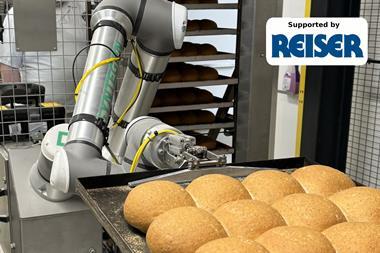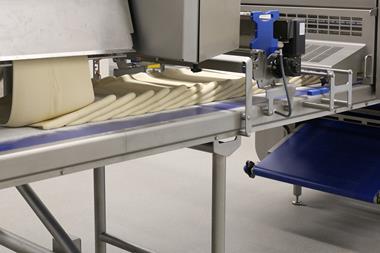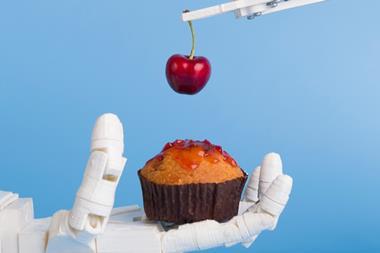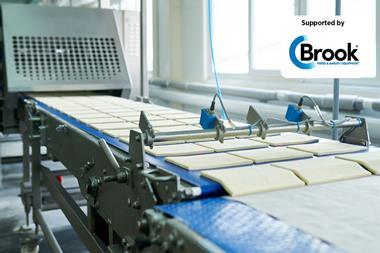No bakery business needs bad press associated with poor hygiene practices, so bakers should take time and care to ensure they are maintaining high standards of cleanliness and pest control
No bakery business needs bad press associated with poor hygiene practices, so bakers should take time and care to ensure they are maintaining high standards of cleanliness and pest control
Whoever coined the phrase “no publicity is bad publicity” clearly hadn’t considered media headlines referring to rodents and bakeries.
The discovery of a pest infestation can be disastrous for a bakery, with customers turning tail and the courts likely to impose fines of thousands of pounds. Even the largest businesses can fall victim, with Asda, Patisserie Holdings and Sayers the Bakers among those fined in the past 18 months.
So, what are the challenges facing bakery firms in terms of pest control and what types of pest should concern them most?
Any infestation in a bakery is likely to involve three prime suspects: mice, rats and flour moths, says Carl Challenger, director of Challenger Food & Safety. Cockroaches are not as common, as they may only appear in urban areas. “The best advice is to pest-proof your premises and check all deliveries for pests,” he suggests. “Keep shutter doors down unless a delivery is coming in.”
For moths, traps can be fitted, and regular cleaning minimises food debris that might attract them. It is best to keep food stores to a minimum, he adds. The area underneath stocks must be cleaned regularly and checked for pest activity.
Inspectors often discover a catalogue of bad practice if a business has an infestation, says Samuel Turner, principal consultant at CaterSafe Consultants. “Some bakeries may think they are low risk and don’t have to be as thorough as a business handling ready meals, but that is not true,” he adds.
Pressures of paperwork and understaffing, combined with inadequate staff training, may get in the way of effective hygiene according to Turner.
“Managers need to set the standard on food safety – it’s not an optional extra. With food safety problems you have the mavericks and smaller businesses which plead lack of time as their problem,” he says. “But people are becoming savvier and realise hygiene can have an impact on profit margins.”
Bakers should take particular care of gaps under doors and in walls, where a mouse could get through, Turner adds. Fly screens should be put up at windows to keep flies out. Fly-killers should be situated above the floor, not above a surface as flies could drop onto a surface and contaminate any food being prepared.
In wholesale bakeries, ingredients could harbour pests. The best advice is don’t store anything directly on the floor – raise it up on pallets or shelves, says Turner.
Government cutbacks on pest control are adding to the risk of infestation, according to Terri Stigwood, director and food safety consultant at MAS Environmental, where she works with businesses including sandwich producers, cake manufacturers, chocolatiers and flour mills. These cutbacks are evident when you walk down any high street late at night and encounter rodents running around, often feasting on discarded food, she says. It means there are more rodents attempting to get into buildings.
The local authority five-star food hygiene rating system (FHRS) for cafés and takeaways may also be problematic in terms of the food safety culture it promotes, she says, as it only looks at the bare minimum of compliance with the law, with a focus on paperwork.
“The issue is that paperwork never killed anyone, but bad practices have,” adds Stigwood. “Also, complacency can set in when a business gets the top ranking of five stars when, as with any food inspection or audit, it is just a snapshot on the day.”
Complacency is the last thing a business needs in a world when an Instagram snap captioned “I just found these rat droppings in my bun” can go viral quicker than you can say “pest control”.
Skating on ice
An undercover BBC Watchdog investigation this year found ice from Caffè Nero, Starbucks and Costa Coffee contained faecal coliform bacteria.
Gomez Escalada, the microbiologist who carried out the analysis for the BBC, says it was most likely the ice was contaminated by being touched by unclean hands, but that ice machines and ice buckets might have compounded the issue if they were not properly cleaned.
Ice machines can often be overlooked when cleaning, warns David Teasdale, general manager of Dishwashers Direct. “Any part of the unit that has contact with water can develop scale, slime, or mould, which will contaminate ice and has the potential to harm your customers,” he adds.
“If your ice is poor quality, either soft or not clear, this is a sign that you need to clean it,” he says. “When cleaning, the ice machine should be empty. Remove parts for cleaning. Use a soft-bristle nylon brush, sponge, or cloth to carefully clean all parts. Finally, rinse all areas with clean water.”
Teasdale adds that special care should be taken with the area near the drain, and that it is also important to clean the bottom, edges and exterior of the ice machine.
Keep a handle on hygiene
Handwashing is a basic principle of food safety, even for a business that might consider itself low-risk as it only sells drinks, cakes and wrapped sandwiches.
Around 40% of people carry the bacteria Staphylococcus aureus, which can cause vomiting. If a finished bakery item is touched by an unwashed hand with this bacteria, it becomes high-risk.
High standards of personal hygiene and cleanliness must become the culture of the business, says Terri Stigwood, director and food safety consultant at MAS Environmental.
Food businesses must provide adequate hand-wash basins that are properly equipped, she says.
“Any food business that handles cooked and raw food should have separate wash basins, each provided with a mixer tap that has lever arms or is non-contact, such as electronic. Non-contact liquid soap dispensers and paper towels should also be supplied, although provision of these does not mean they will be used.
“High standards of personal hygiene come from the top so everyone in the business must be trained and sign up to it. In that way a good culture is created.”
The legal requirements on handwashing are set out in European Regulation EC/852/2004 on food safety, which states: “An adequate number of washbasins is to be available, suitably located and designated for cleaning hands. Washbasins for cleaning hands are to be provided with hot and cold running water, materials for cleaning hands and for hygienic drying. Facilities for washing food are to be separate from the hand-washing facility.”


























No comments yet